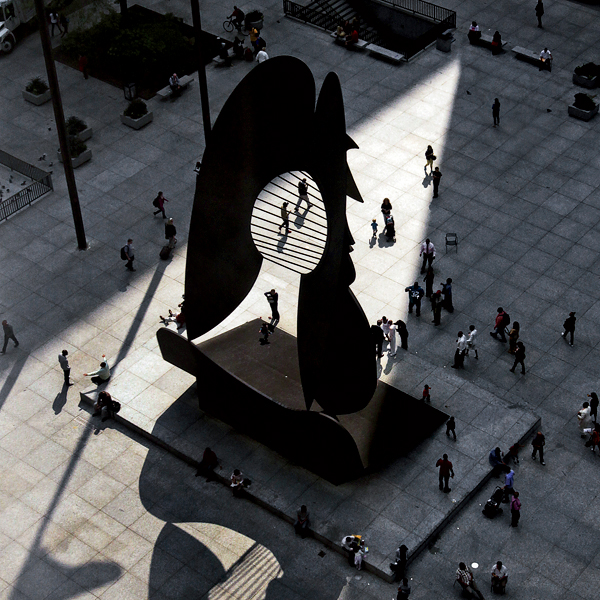
1 To woo the artist, SOM architect William Hartmann presented Pablo Picasso with a series of Chicago gifts, including a Cubs hat, a Sioux headdress, and White Sox memorabilia, writes Patricia Balton Stratton in The Chicago Picasso: A Point of Departure (Ampersand). According to Hartmann, Picasso was grateful, but “he could not understand why Chicago named one of its teams after their stockings.”
2 Some Chicagoans—including those in Richard J. Daley’s inner circle—were skeptical of the sculptor because of his past communist tendencies. But the mayor stood his ground, replying, “Politics we handle ourselves. Picasso is the best artist in the world and that is what we care about.”
3 The 50-foot-tall landmark is not an exact replica of Picasso’s 41-inch maquette. To convert the prototype to a full-size sculpture that would remain stable in the wind, the architects tweaked the dimensions of certain elements and added a support piece behind the “face.” When Picasso saw the changes, he called the result “better than the original.”
4 The sculpture was built in a steel fabrication plant in Gary, Indiana. Because there were no precise measurements to follow, workers had to perform intricate scale-up translations. Getting them onboard took a “tremendous effort in persuading, explaining, and romanticizing the Picasso work to our people,” according to then–senior design engineer Anatol Rychalski. “Everyone has the soul of an artist; some must dig to find it.”
5 Its abstract form and lack of a title made the piece fodder for speculation. Was it a baboon? An Afghan hound? Picasso’s wife? A former muse? Not everyone was a fan. Chicago art critic Franz Schulze labeled it “a monument to Picasso rather than a monument by Picasso.” Has his opinion changed? Schulze told Stratton he still considers it “a third-rate Picasso.”


